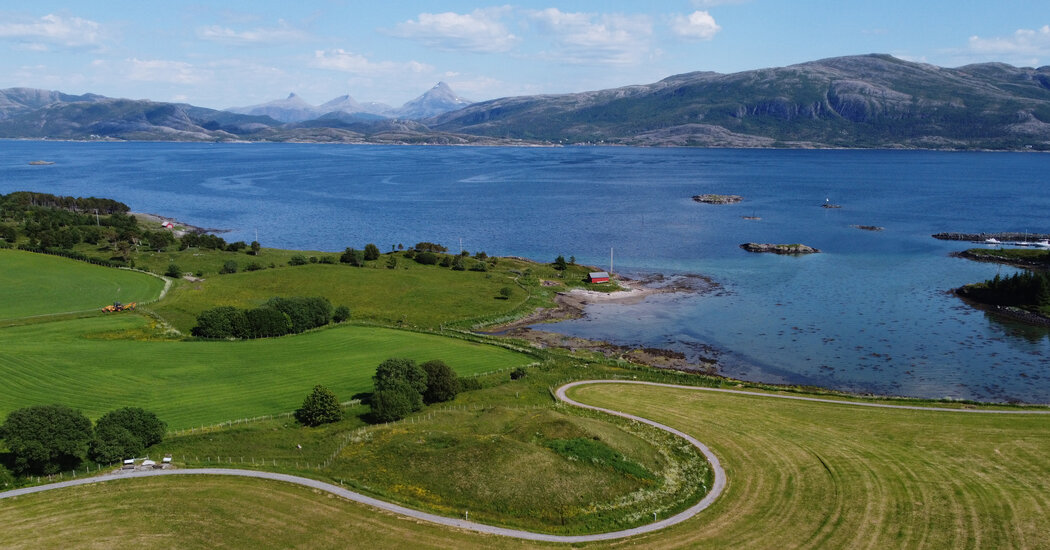On the Norwegian island of Leka, archaeologists have unearthed the earliest known ship burial in Scandinavia.
For hundreds of years, Norwegians thought they knew who or what had been interred in an enormous barrow on the island of Leka, which is just off the country’s northern coast, facing the Atlantic Ocean. The grassy hillock is named for King Herlaug, a ninth-century Viking monarch who, if the Norse folklore is to be believed, had himself and 11 companions buried alive rather than face certain defeat by a rival ruler.
The story of the mass suicide has been regarded as potentially factual since the late 1700s, when three tunnels were bored into the burial mound, revealing nails, animal bones, a bronze cauldron and a seated skeleton with a sword. The human remains, notionally identified as Herlaug, were exhibited with other artifacts from the barrow for a time at the nearby Trondheim Cathedral School before disappearing altogether in the early 1920s and leaving an unresolved puzzle. Evidently, the cauldron was melted down into shoe buckles.
Last summer, archaeologists and a metal detectorist conducted a small survey of the tumulus on behalf of the Norwegian Directorate for Culture Heritage. They were attempting to determine whether the barrow — originally 41 feet high and 230 feet in diameter — harbored a ship, as scholars had long suspected. “We know very little about what these large mounds contain because hardly any of them have been investigated,” said Geir Grønnesby, an archaeologist at the Norwegian University of Science and Technology who supervised the dig.
The researchers dug three shallow trenches at the site and unearthed wood fragments and iron planking rivets that were thought to have once been part of a ship. Although the vessel had largely rotted away, radiocarbon dating of the wood around some of the rivets and the two charcoal layers high up in the mound indicated that the burial had occurred around 700 A.D., making it the earliest known example of a ship burial in Scandinavia.
“We do not know if the ship was oceangoing, meaning that it crossed over the North Sea to England,” Dr. Grønnesby said. “But it had a maritime competence that allowed it to go along the coast to the continent.”
